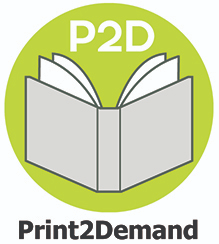Our Book Printing Glossary
Basis weight of paper – The weight of a material defined by g/m2 (grammes per square metre).
Bleed – Printed matter which runs off the edge of the paper. The bleed is the amount by which the illustration extends beyond the trim size (We require 3mm of bleed).
Blocking – Impressing a design or lettering on a book cover, the blocking may be in ink or metal foil, or it may be blind blocked to produce a recessed surface.
Book-block – The pages of a book when prepared for casing in, before the case is added. Also book pages trimmed all round ready for punching.
Brass – A brass die used for blocking.
Bulk – The thickness of a book or sheet of paper.
Case– The cover of a book, prepared beforehand for affixing to the book-block.
Casebinding – A method of binding in which the cover is made separately but consists of rigid or flexible boards covered with paper, cloth or other material, in such a manner that the covering material surrounds the outside and the edges of the board. Covers always project beyond the trimmed edges of the next pages.
Casing in – Inserting the book block into its case and pasting down.
Collate – To check the sections of a gathered book to ensure that they are all present and are in the correct order.
Cut – The act of cutting flat printed or unprinted paper on a guillotine or three knife trimmer.
Draw on cover – A paperback cover which is attached to the book block by gluing the spine.
Edges – The three cut sides of a book-block.
Endpapers – A piece of plain, fancy printed paper folded into four pages to the page size, sewn or pasted to the first and lastsection to secure the book to the case or binding.
Extent – The length of a book in terms of the number of pages.
Flyleaf – The inside leaf of a four page endpaper which is pasted along the folded edge of the first or last page of the book.
Foil– Sized metallic or pigment leaf used in blocking lettering or designs on the surface. Used primarily for blocking book covers.
Foredge – The outer edge of a book, opposite the spine.
Foot – The bottom edge of a book.
Frontispiece – An illustration on the page facing the title page of the book.
Head – The top cut edge of a book.
Jacket – The printed paper outer cover which wraps round a case bound book in order to protect it and to act as a point of sale display.
Laminating – The application of a film, either gloss or matt finish, to the surface of the printed book cover to enhance its appearance and to increase durability.
Landscape – The Shape of an illustration or book is referred to as ‘Landscape’ when its width is greater than its height.
Leaf – A sheet of a book containing two pages, one on each side. Thus, a book containing 32 leaves has 64 pages.
Limp cover – A flexible book cover from 240gsm (Standard) up to 300gsm in weight distinct from a board cover.
Loose proof – A proof of the cover and inner pages on the machine and papers to be used on the main print run. Unbound and Unlaminated.
Perfect binding – A style of unsewn binding in which the leaves of a book are held together at the binding edge by adhesive.
Portrait – The shape of a book or illustration is referred to as portrait when its height is greater than its width.
Saddle stitching – A method of binding one or more sections with or without a cover by means of wire staples through the centrefold.
Section – A sequence of pages forming part of a book.
Self Cover – A booklet cover of the same paper as the inside leaves, generally the first and last pages on the sheet.
Side gluing – A line of adhesive on the front and back of a book-block to strengthen the hinge opening.
Spine – The bound edge of a book, also known as the ‘back’.
Spiral Binding – Attaching single sheets by means of a wire or plastic coil passed through punched holes.
Square back – A binding which has been collated and trimmed but not round and backed. Also called ‘Flat Back’.
